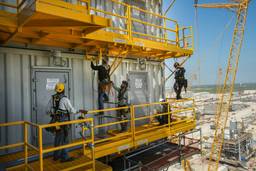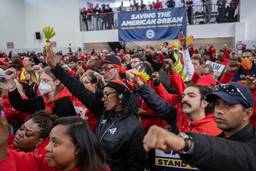
CHICAGO — The meeting was about the need for immigrants to get counted in the upcoming U.S. Census. Out of the blue, some words jumped out at me from a talk I’ve heard many times lately.
“We need to show how immigrants contribute to the economy,” the speaker was telling a gathering of Indians and Pakistanis and Latinos and Poles and others from this delightfully spicy stew of immigrant neighbors on Chicago’s Far North Side.
“…how immigrants contribute to the economy…”
My mind wandering off, I thought about what I wished an accounting of immigrants’ contributions would show. It would show, I hoped, the energy and grit that immigrants have pumped into American unions.
It would capture the moment not so long ago that American union leaders realized the drive that immigrants provided them and how they quickly leapt to chant the words that telegraph the spirit of so many of their new members: “si se puede” – Yes, it can be.
It would light up a digital map of the U.S. with all of the restaurants, donut stores and dry cleaning shops, all the gardening, and construction companies, and small businesses, and all of the management spots in Corporate America now occupied by the children of immigrants.
It would show, as a recent study by the New York-based Fiscal Policy Institute pointed out, that the metro areas in the nation with the fastest growing economies in the last decade were the ones where immigrants saw their greatest increases in the labor force.
It would recount how maid, bellhops and janitors; workers scrapping by on miserable minimum-wage jobs and written off as too scared, too marginal, and too disorganized to stand up for themselves, stood up to win labor battles in Los Angeles and Chicago and Houston and on and on.
And how, as the study also showed, immigrants are more likely to be workers than their native-born counterparts; how immigrants share in the fruits of the nation’s very best jobs but also are concentrated heavily in the lower-paying jobs.
It would catch the image of thousands, or maybe millions, who are victimized at their workplaces because they are foreign born, because their English is weak, and possibly because they dwell precariously in the underworld of the undocumented.
That hopefully would help us to understand how the economy would get a quick shot in the arm if some of these workers were able to come out from the shadows and were allowed to earn the real wages they deserve; wages that would then flow back into their communities.
Sitting here in a room on a street in a much lived Chicago neighborhood where 30 years ago they spoke five or more other languages, and where 100 years ago they spoke that many more different languages, that is where my mind went when I heard those words: “…how immigrants contribute to the economy…”
Isn’t it amazing, I also wondered, how our conversation doesn’t change?
A former labor writer for the Chicago Tribune, Stephen Franklin is a Pulitzer Prize finalist and an adjunct professor at the University of Illinois Urbana-Champaign School of Labor and Employment Relations.







